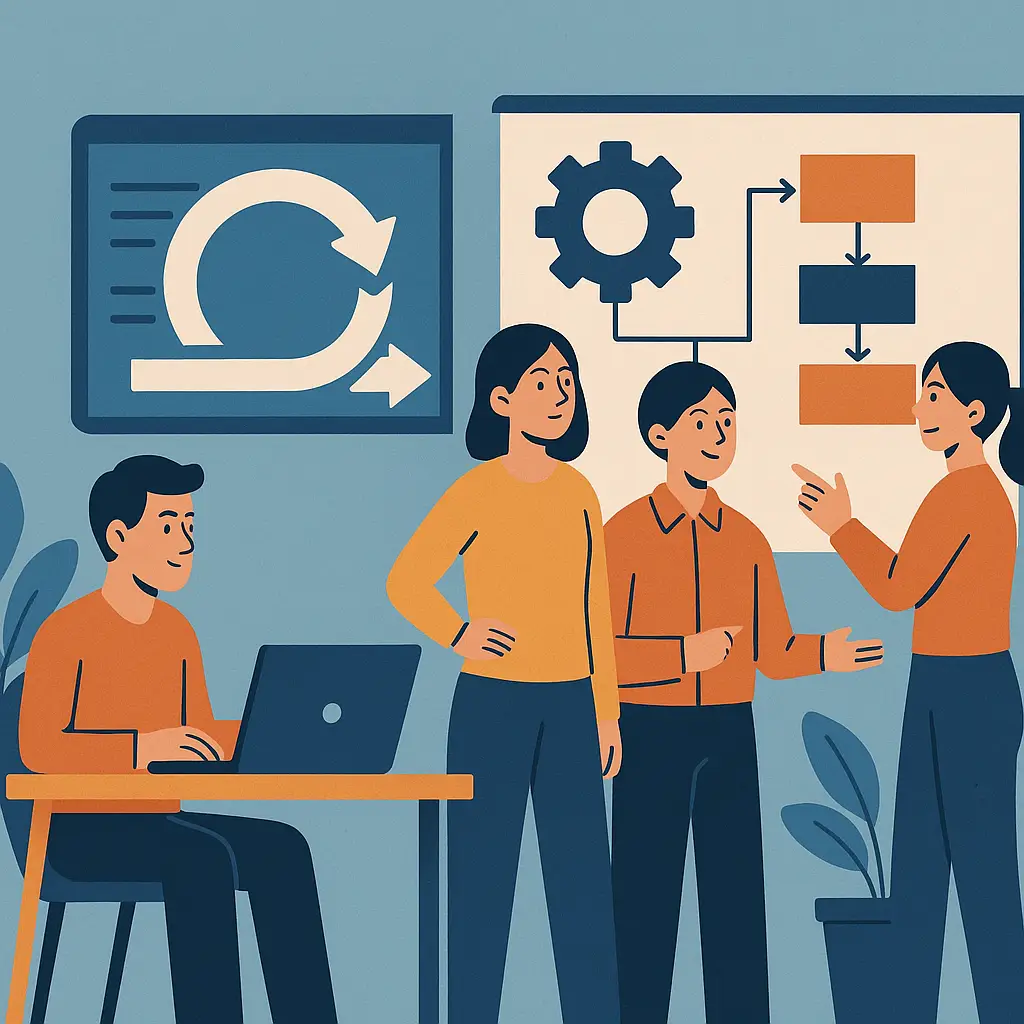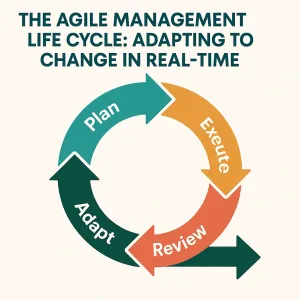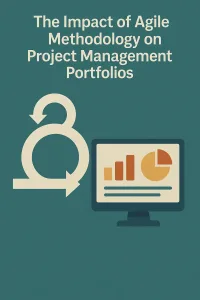Introduction to Iterative Agile Methodology
In the fast-paced world of technology project management, the iterative agile methodology has emerged as a powerful approach to delivering high-quality products efficiently. This section provides a foundational understanding of iterative agile methodology, its core principles, and its significance in managing tech projects.
Definition of Iterative Agile Methodology
Iterative agile methodology is a project management approach that emphasizes flexibility, collaboration, and customer feedback throughout the development process. Unlike traditional project management methods that follow a linear path, iterative agile allows teams to work in cycles or “iterations,” where each cycle involves planning, executing, reviewing, and refining the project deliverables. This methodology is rooted in the Agile Manifesto, which prioritizes individuals and interactions, working software, customer collaboration, and responsiveness to change.
Core Principles of Iterative Agile
- Incremental Development: Projects are broken down into smaller, manageable units, allowing teams to focus on delivering functional components in each iteration.
- Continuous Feedback: Regular feedback from stakeholders and end-users is integral to the process, ensuring that the product evolves based on real user needs and preferences.
- Collaboration: Agile promotes teamwork and communication among cross-functional teams, fostering a collaborative environment that enhances creativity and problem-solving.
- Adaptability: The iterative nature of agile allows teams to adapt to changes quickly, whether they arise from market demands, technological advancements, or user feedback.
Significance of Iteration in Project Management
Iteration is a cornerstone of the agile methodology, providing several key advantages:
- Risk Mitigation: By delivering work in small increments, teams can identify and address issues early in the development process, reducing the risk of project failure.
- Enhanced Quality: Continuous testing and feedback loops help ensure that the final product meets quality standards and user expectations.
- Faster Time-to-Market: Iterative cycles enable teams to release functional components more quickly, allowing organizations to respond to market changes and capitalize on opportunities sooner.
Benefits of Adopting Iterative Agile in Tech Projects
Implementing iterative agile methodology in technology projects offers numerous benefits:
- Improved Customer Satisfaction: Regular engagement with stakeholders ensures that the product aligns with user needs, leading to higher satisfaction rates.
- Increased Flexibility: Teams can pivot and adjust their strategies based on feedback and changing requirements, making it easier to navigate uncertainties.
- Enhanced Team Morale: The collaborative and empowering nature of agile fosters a positive work environment, leading to higher motivation and productivity among team members.
- Better Resource Management: Iterative planning allows for more accurate forecasting and resource allocation, optimizing project budgets and timelines.
The iterative agile methodology is a dynamic approach that equips technology project managers and teams with the tools to navigate the complexities of modern project demands. By embracing its core principles and benefits, organizations can enhance their project outcomes and drive innovation in their tech initiatives.
Common Challenges and How to Overcome Them
Implementing iterative agile methodology in technology projects can lead to significant improvements in flexibility, responsiveness, and overall project success. However, project managers and teams often encounter several common challenges during this transition. Below are some of these challenges along with strategies to overcome them.
1. Team Resistance
Challenge:
One of the most prevalent challenges is resistance from team members who may be accustomed to traditional project management approaches. This resistance can stem from a lack of understanding of agile principles or fear of change.
Strategies to Overcome:
– Education and Training: Provide comprehensive training sessions on agile methodologies to ensure that all team members understand the benefits and processes involved. This can help alleviate fears and build confidence in the new approach.
– Involvement in Decision-Making: Engage team members in the decision-making process regarding the adoption of agile practices. When team members feel their input is valued, they are more likely to embrace the change.
– Pilot Projects: Start with small pilot projects to demonstrate the effectiveness of iterative agile practices. Successful outcomes can help build trust and encourage broader adoption within the team.
2. Unclear Requirements
Challenge:
In iterative agile projects, requirements can often evolve over time, leading to confusion and misalignment among team members and stakeholders. This can result in wasted effort and frustration.
Strategies to Overcome:
– Regular Stakeholder Engagement: Establish regular check-ins with stakeholders to clarify requirements and gather feedback. This ensures that everyone is aligned and that any changes in requirements are communicated promptly.
– User Stories and Backlogs: Utilize user stories to capture requirements in a clear and concise manner. Maintain a prioritized backlog that is regularly reviewed and updated based on stakeholder feedback and project progress.
– Incremental Delivery: Focus on delivering incremental value through short iterations. This allows for adjustments based on user feedback, reducing the risk of misalignment with stakeholder expectations.
3. Communication Gaps
Challenge:
Effective communication is crucial in agile projects, yet teams often face challenges in maintaining clear and open lines of communication, especially in distributed teams.
Strategies to Overcome:
– Daily Stand-Ups: Implement daily stand-up meetings to facilitate quick updates and address any blockers. This fosters a culture of transparency and keeps everyone informed about project status.
– Collaboration Tools: Leverage collaboration tools (e.g., Slack, Trello, Jira) to enhance communication and ensure that all team members have access to the same information. These tools can help bridge gaps, especially in remote teams.
– Feedback Loops: Create structured feedback loops where team members can share insights and suggestions. This encourages continuous improvement and helps identify potential issues early on.
4. Maintaining Flexibility While Ensuring Alignment
Challenge:
While agility promotes flexibility, it can sometimes lead to scope creep or misalignment with project goals if not managed properly.
Strategies to Overcome:
– Define Clear Objectives: Establish clear project objectives and key performance indicators (KPIs) at the outset. This provides a framework for decision-making and helps maintain focus throughout the project.
– Regular Review and Retrospectives: Conduct regular reviews and retrospectives to assess progress against objectives. This allows teams to reflect on what is working well and what needs adjustment, ensuring alignment with project goals.
– Empower Teams: Encourage teams to make decisions within the framework of the project objectives. Empowered teams are more likely to adapt effectively while still aligning with overall project goals.
By addressing these common challenges with proactive strategies, technology project managers and teams can successfully implement iterative agile methodologies, leading to enhanced project outcomes and greater stakeholder satisfaction.
Best Practices for Implementing Iterative Agile in Tech Projects
Implementing iterative agile methodology in technology projects can significantly enhance project outcomes and team dynamics. Here are some best practices that technology project managers and teams can adopt to ensure successful implementation:
1. Establish a Clear Vision and Objectives
- Define Project Goals: Begin with a well-articulated vision that outlines the project’s purpose and desired outcomes. This clarity helps align the team and stakeholders, ensuring everyone is working towards the same objectives.
- Set Measurable Objectives: Break down the vision into specific, measurable, achievable, relevant, and time-bound (SMART) objectives. This approach allows for tracking progress and making necessary adjustments throughout the project lifecycle.
2. Encourage Regular Feedback Loops and Continuous Improvement
- Implement Iterative Cycles: Use short development cycles (sprints) to deliver incremental improvements. This allows teams to gather feedback early and often, making it easier to pivot or refine features based on user input.
- Conduct Retrospectives: After each iteration, hold retrospective meetings to discuss what went well, what didn’t, and how processes can be improved. This practice fosters a culture of continuous improvement and encourages team members to voice their insights.
3. Advocate for Cross-Functional Collaboration and Team Empowerment
- Build Cross-Functional Teams: Assemble teams with diverse skill sets that can collaborate effectively. This diversity enhances problem-solving capabilities and fosters innovation, as team members bring different perspectives to the table.
- Empower Team Members: Encourage autonomy by allowing team members to make decisions related to their work. Empowered teams are more engaged and motivated, leading to higher productivity and better project outcomes.
4. Leverage Tools and Technologies
- Utilize Agile Project Management Tools: Implement tools like Jira, Trello, or Asana to facilitate task management, track progress, and enhance communication among team members. These tools can help visualize workflows and ensure transparency.
- Incorporate Automation: Use automation for repetitive tasks such as testing and deployment. This not only saves time but also reduces the risk of human error, allowing teams to focus on more strategic activities.
5. Foster a Culture of Trust and Transparency
- Encourage Open Communication: Create an environment where team members feel safe to share ideas, challenges, and feedback. Open communication fosters trust and collaboration, which are essential for agile success.
- Share Progress with Stakeholders: Regularly update stakeholders on project progress and challenges. Transparency builds trust and ensures that everyone is informed and engaged in the project’s direction.
By following these best practices, technology project managers can effectively implement iterative agile methodologies, leading to successful project outcomes and a more cohesive team environment. Emphasizing clear objectives, continuous feedback, collaboration, and empowerment will not only enhance project efficiency but also contribute to a culture of innovation and adaptability within tech teams.
Conclusion: Future of Iterative Agile in Tech Project Management
As technology continues to evolve at a rapid pace, the iterative agile methodology has emerged as a powerful framework for managing projects effectively. This approach emphasizes flexibility, collaboration, and continuous improvement, making it particularly well-suited for the dynamic nature of tech projects. Here are the key takeaways and future trends regarding the application of iterative agile methodology in project management:
- Recap of Benefits and Successes:
- Enhanced Flexibility: Iterative agile allows teams to adapt to changing requirements and market conditions, which is crucial in the tech industry where innovation is constant. By breaking projects into smaller, manageable iterations, teams can respond quickly to feedback and pivot as necessary.
- Improved Collaboration: Agile methodologies foster a culture of collaboration among team members and stakeholders. Regular meetings, such as daily stand-ups and sprint reviews, ensure that everyone is aligned and can contribute to the project’s success.
- Higher Quality Deliverables: Continuous testing and integration throughout the project lifecycle lead to higher quality outcomes. By addressing issues early and often, teams can reduce the risk of major failures and enhance customer satisfaction.
- Tech Project Management:
- The tech industry is witnessing a shift towards more adaptive project management practices. As organizations increasingly embrace digital transformation, the demand for agile methodologies is growing. This trend is supported by the rise of remote work and distributed teams, which require flexible frameworks that can accommodate diverse working styles and locations.
- Additionally, the integration of advanced technologies such as artificial intelligence and machine learning into project management tools is enhancing the capabilities of agile methodologies. These tools can provide real-time analytics and insights, enabling teams to make data-driven decisions and optimize their processes.
- Consider Iterative Agile:
- For technology project managers and teams looking to enhance their project outcomes, adopting an iterative agile approach can be a game-changer. By embracing this methodology, teams can not only improve their efficiency and responsiveness but also foster a culture of innovation and continuous learning.
- As tech project management continues to evolve, those who leverage iterative agile methodologies will be better positioned to navigate challenges and seize opportunities in an increasingly competitive environment.
The iterative agile methodology is not just a trend; it is a fundamental shift in how tech projects are managed. By understanding its benefits and staying attuned, project managers can lead their teams to success in the future. Embracing this approach will not only enhance project outcomes but also empower teams to thrive in a fast-paced technological world.
Find out more about Shaun Stoltz https://www.shaunstoltz.com/about/.
This post was written by an AI and reviewed/edited by a human.



